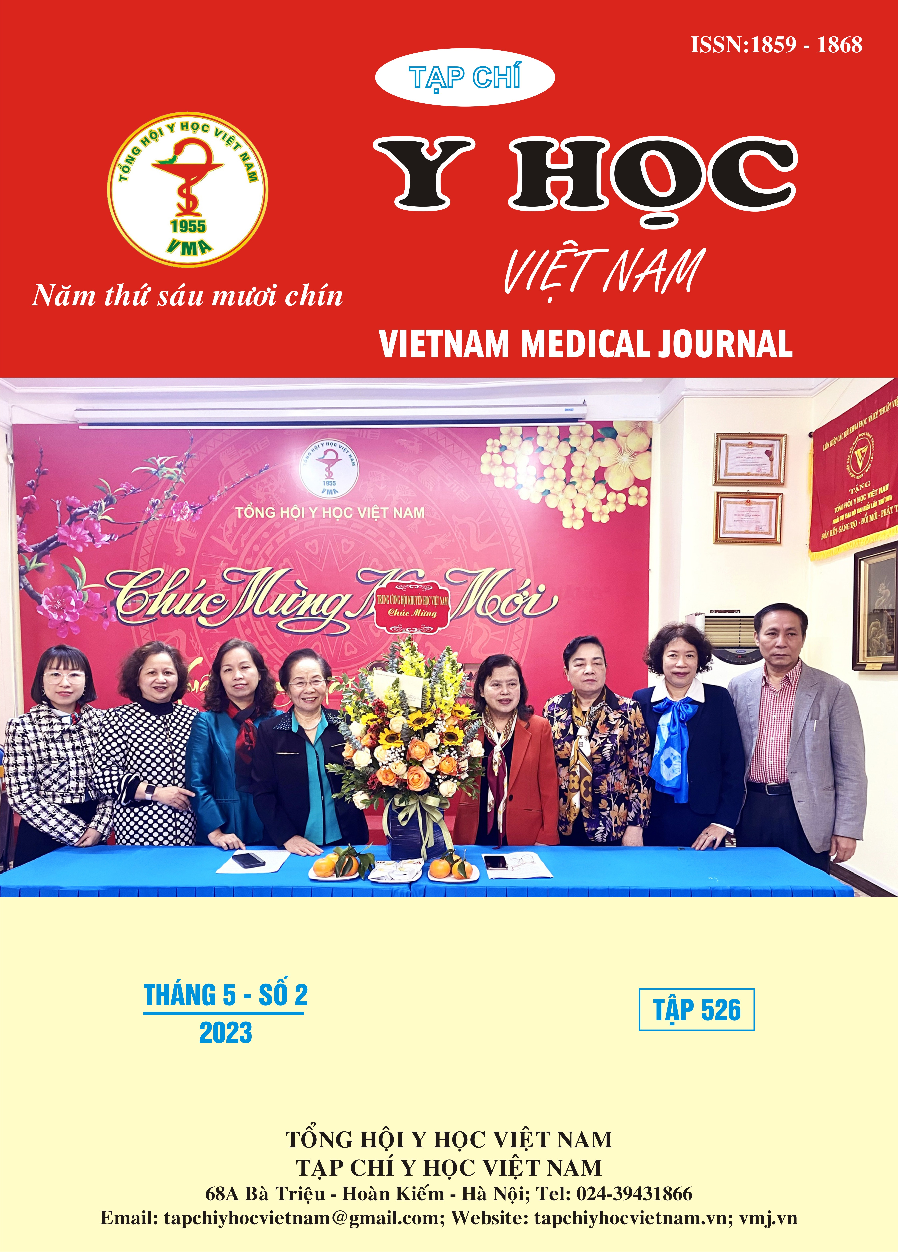EXPRESSION OF PROTEIN KOJA FUSED WITH SUMO IN ESCHERICHIA COLI
Main Article Content
Abstract
Background: Kojic acid is a skin-lightening agent extensively used in cosmetic products. Kojic acid is produced by fungal fermentation, which is time-consuming, thus elevating the product’s price. Recent studies in Aspergillus oryzae idicated that gene kojA encodes for a protein involved in the synthesis of kojic acid using glucose as substrate. Objectives: This study aims to express recombinant KojA fused with SUMO in Escherichia coli. Methods: Plasmid pET-SUMO-KojA was transformed into E. coli BL21(DE3) for the expression of KojA protein with SUMO tag. KojA as inclusion bodies was dissolved and purified by IMAC. Results: The transformed bacteria can express KojA with high yield, nevertheless as inclusion bodies (TB medium, 0.1 mM IPTG at 25°C). Inclusion bodies could be dissolved in buffer containing 6 M urea, pH 12 at 25°C and purified by IMAC with the final yield of 37 mg/L culture. Conclusions: In this study, we have successfully transformed E. coli BL21(DE3) with the recombinant plasmid pET-SUMO-kojA. The bacteria expressed KojA with high amount in inclusion bodies. The insoluble protein could be completely dissolved and the pure protein obtained by 1-step purification using Ni-Sepharose column.
Article Details
Keywords
kojic acid, kojA gene, pET-SUMO, recombinant protein
References
2. Terabayashi Y., Sano M., Yamane N. et al. (2010), "Identification and characterization of genes responsible for biosynthesis of kojic acid, an industrially important compound from Aspergillus oryzae", Fungal Genetics and Biology. 47 (12), pp. 953-961.
3. Nguyễn Quốc Thái, Nguyễn Duy Thạch (2023), “Dự đoán khả năng hoà tan và thiết kế vector biểu hiện protein KojA trong con đường sinh tổng hợp acid kojic”, Tạp chí Y học Việt Nam, Tập 526, tháng 5, số 2, tr.
4. Studier, F. W. (2005) “Protein production by auto-induction in high-density shaking cultures”, Protein expression and purification, 41 (1), pp. 207-234.
5. Bradford, M. M. (1976). “A rapid and sensitive method for the quantitation of microgram quantities of protein utilizing the principle of protein-dye binding”, Analytical biochemistry, 72 (1-2), pp. 248-254.


